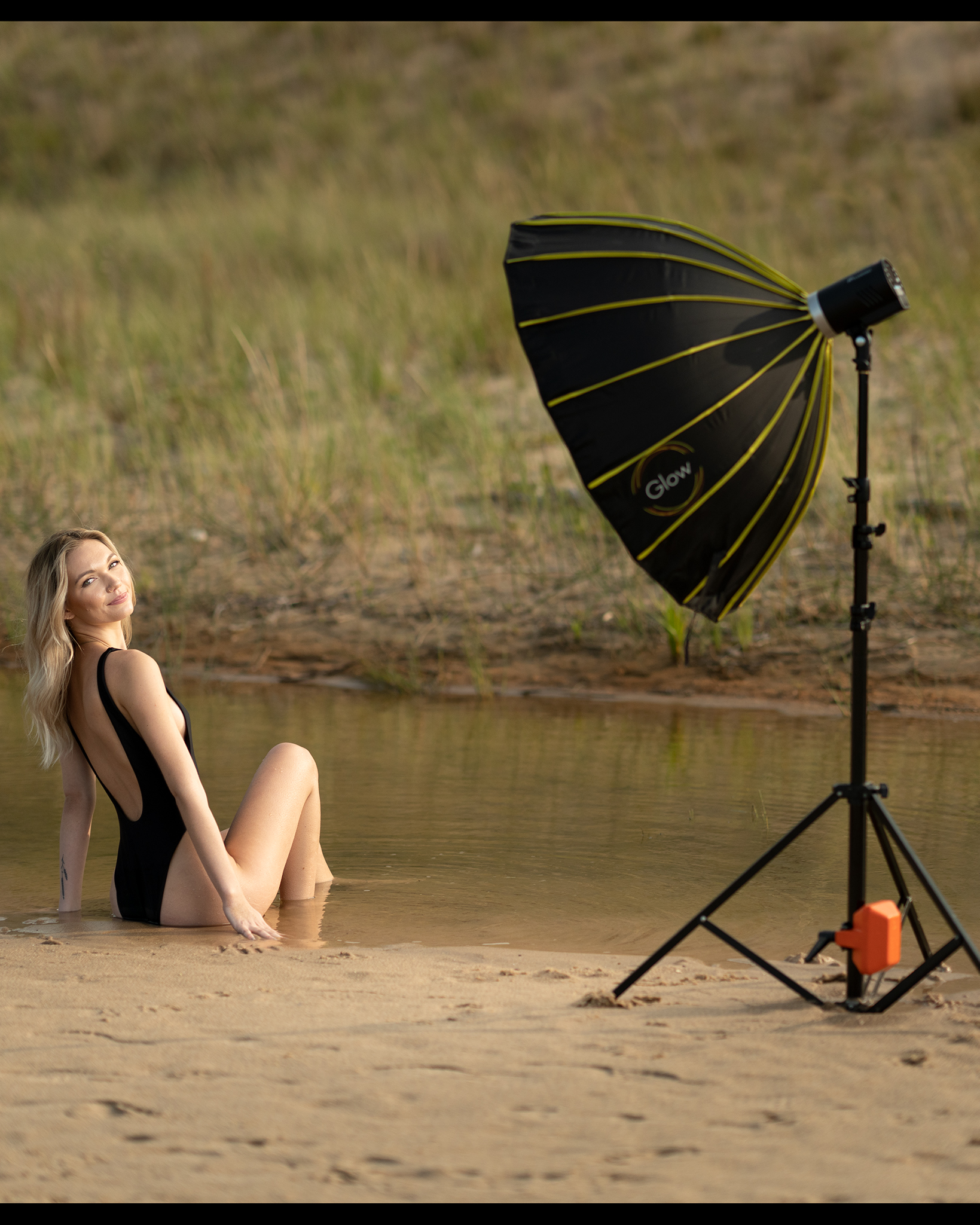I was a photographer for about 4 years before I ever crossed paths with a C-stand. Maybe it’s because as a wedding photographer, nobody wanted to carry around such a robust stand. Nowadays, I feel like I see C-stands being used for lighting equipment more than spreader stands—at least on social media. I’ve added quite a few C-stands to my studio, and occasionally pull them out for on-location work too.
They’ve become so popular that they often accompany a photographer’s first purchase of off-camera lighting. Flashpoint users regularly pair them with the Xplor 400 Pro, Xplor 600 Pro, and Xplor 600. On the surface, this light stand seems very simple. It’s just a couple of legs and knobs, almost impossible to screw up—right?
Wrong.
C-stands are regularly applied to the wrong environment or used improperly. This can lead to lighting equipment tipping over and breaking, or even harming someone nearby. So, before you grab one, let’s make sure it’s the best option.
C-stand Vs. Spreader Stand
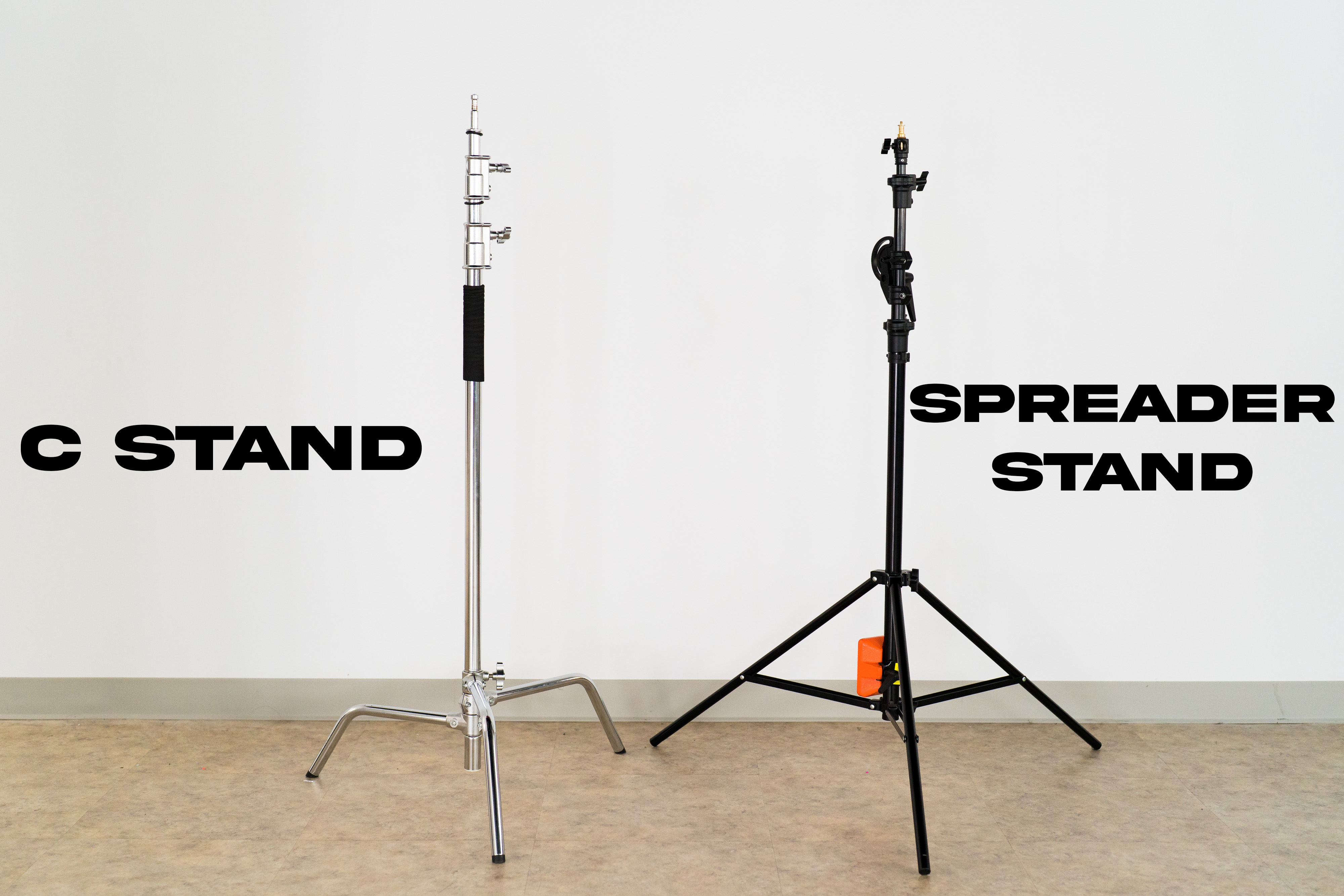
C-stands are extremely popular on film sets. They group together efficiently. They are durable, often lasting decades with minimal care. They are versatile, as they can be used for lighting, audio gear, scrims, reflectors, and all sorts of grip.
Many people assume C-stands are the safest and sturdiest stand available because of their heavy turtle base. Although, they can tip over very easily due to their narrow footprint. A similarly sized spreader stand will be more resistant to tipping because it’s footprint is much wider. I think this is especially important for photographers who are working outdoors, as the slightest breeze on a large light modifier can easily send a C-stand falling over—yes, even with sandbags.
If C-stands are prone to tipping, why would large film sets use them so much?
Film sets have trained professionals such as the key grip and grip crew who are focused entirely on rigging cameras, lighting, and accessories safely. They ensure that lights are mounted correctly, often with safety leashes. They ensure lights have plenty of weight to keep the stand from tipping. There are safety protocols in place to make sure people don’t bump into C-stands, like putting a tennis ball at the open end of a grip arm.
Additionally, lighting rigs on film sets tend to be much different than the stills world. For film production, the lamp (light source) tends to be mounted independently from the light modifier—if the light is modified at all. In the photo world, it’s very common to have a large umbrella or softbox directly attached to the light source. These large modifiers add leverage and catch the wind, both making them more likely to fall over.
It’s for the reasons I mentioned above that I think anyone doing photography sessions outdoors should stick with spreader stands. The only time I recommend a C-stand outdoors is if you have someone there to keep hands on the stand at all times. If you’re indoors, it’s purely a matter of preference. In our studio, we keep our C-stands on casters as it’s way easier than moving spreader stands around.
If you decide that you want to use a C-stand. Here are some tips to make sure you are using them safely.
C-stand safety tips:
Always ensure the center column is going straight up. Make sure you are not on an uneven surface. There are C-stands available with an adjustable leg if you are using them on uneven terrain.
Make sure turtle base legs are completely locked before placing anything on the center column. The Flashpoint C-stand has grooves to ensure the legs are properly spaced.
When using a sandbag, place it on the tallest leg to ensure it is not making contact with the ground. This ensures all of the sandbag weight is being used to hold the light down.
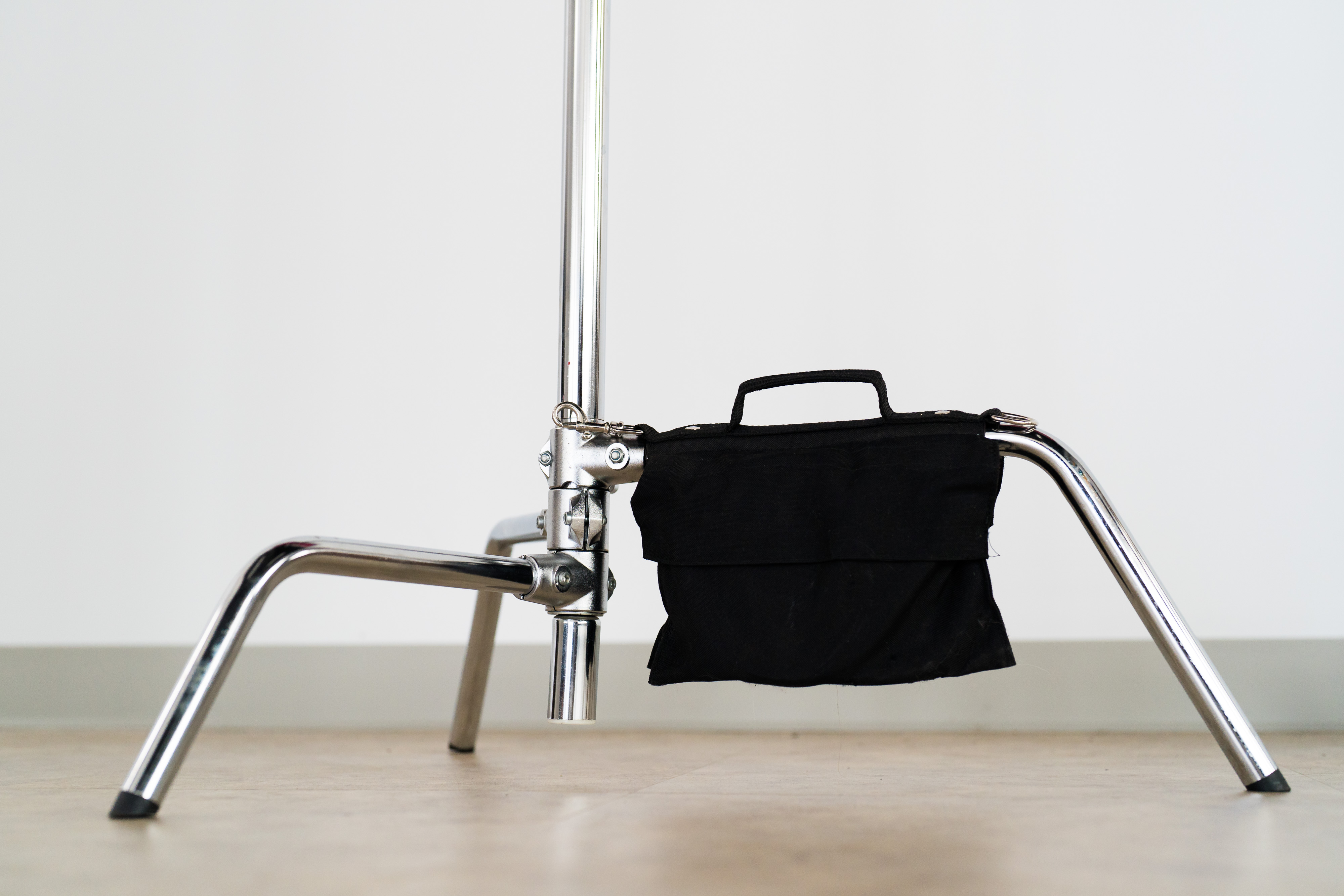
When booming:
When booming, make sure the arm is directly over a leg. It’s best to boom directly over the tallest leg and use a counterweight opposite the light.
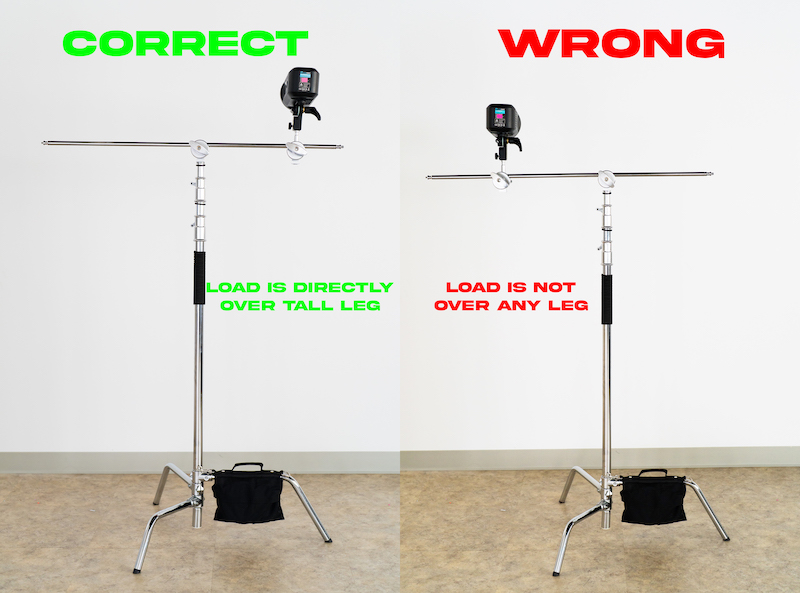
Be cautious when using a grip arm; a heavy light and large modifier can easily be too much leverage. If you plan on booming a large light and modifier, I recommend considering a boom arm, spreader convertible boom stand, or junior stand with boom arm.
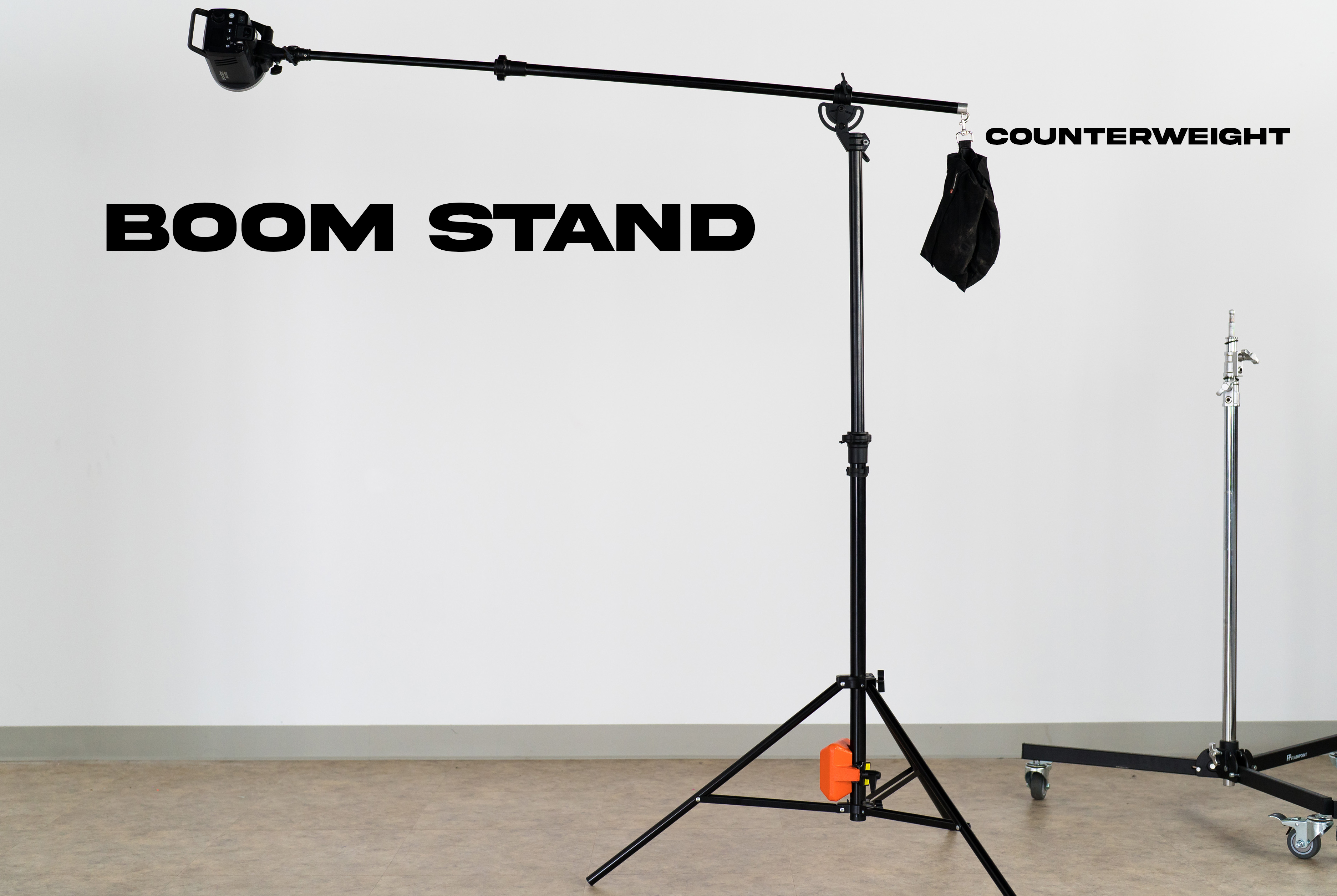
Make sure the weight of the light is tightening the C-stand’s knuckle. This means when the weight of your light creates downward force, it is to the right of your knuckle and will only tighten more. If you mount your light the opposite way, it will loosen your knuckle over time and eventually release.
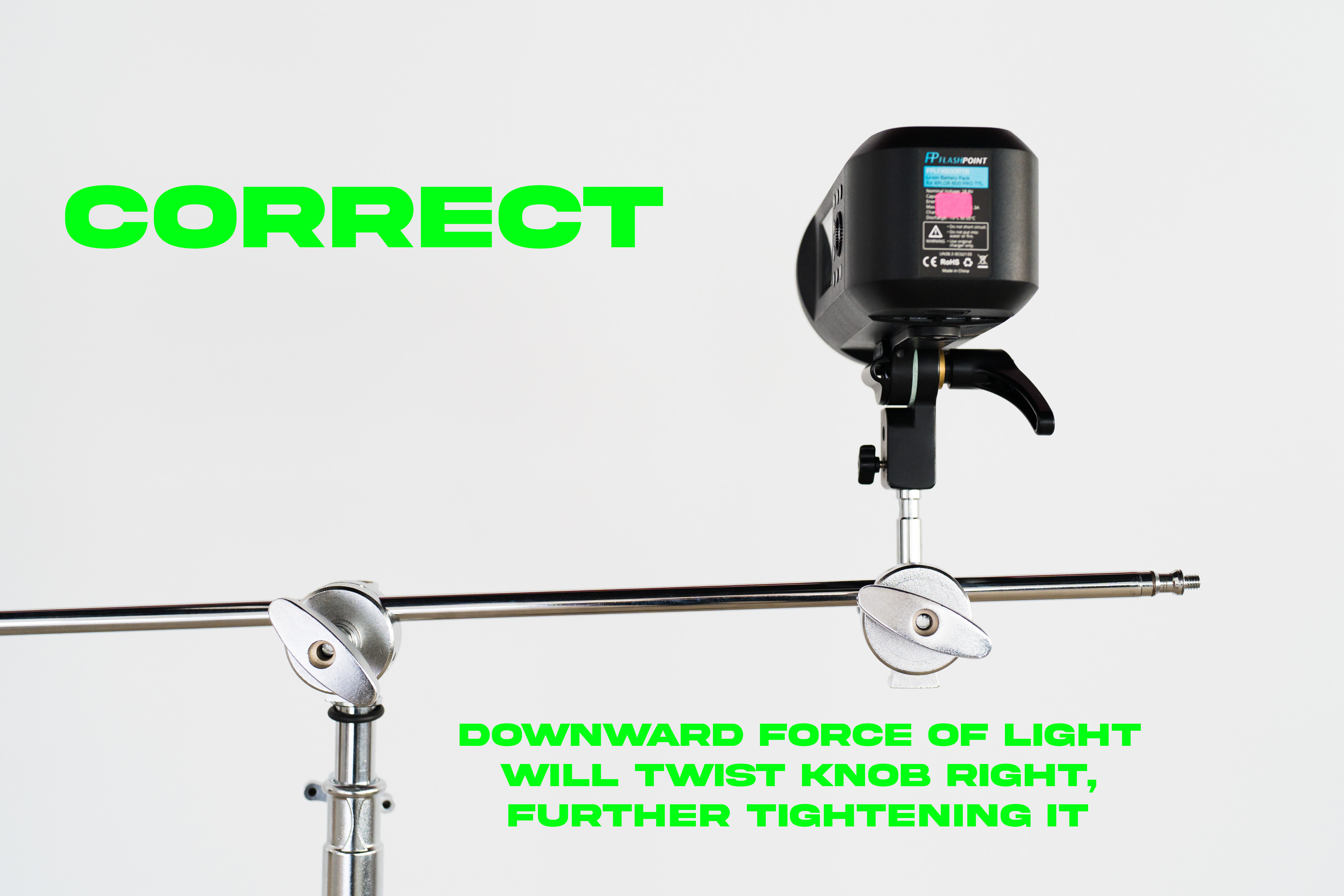
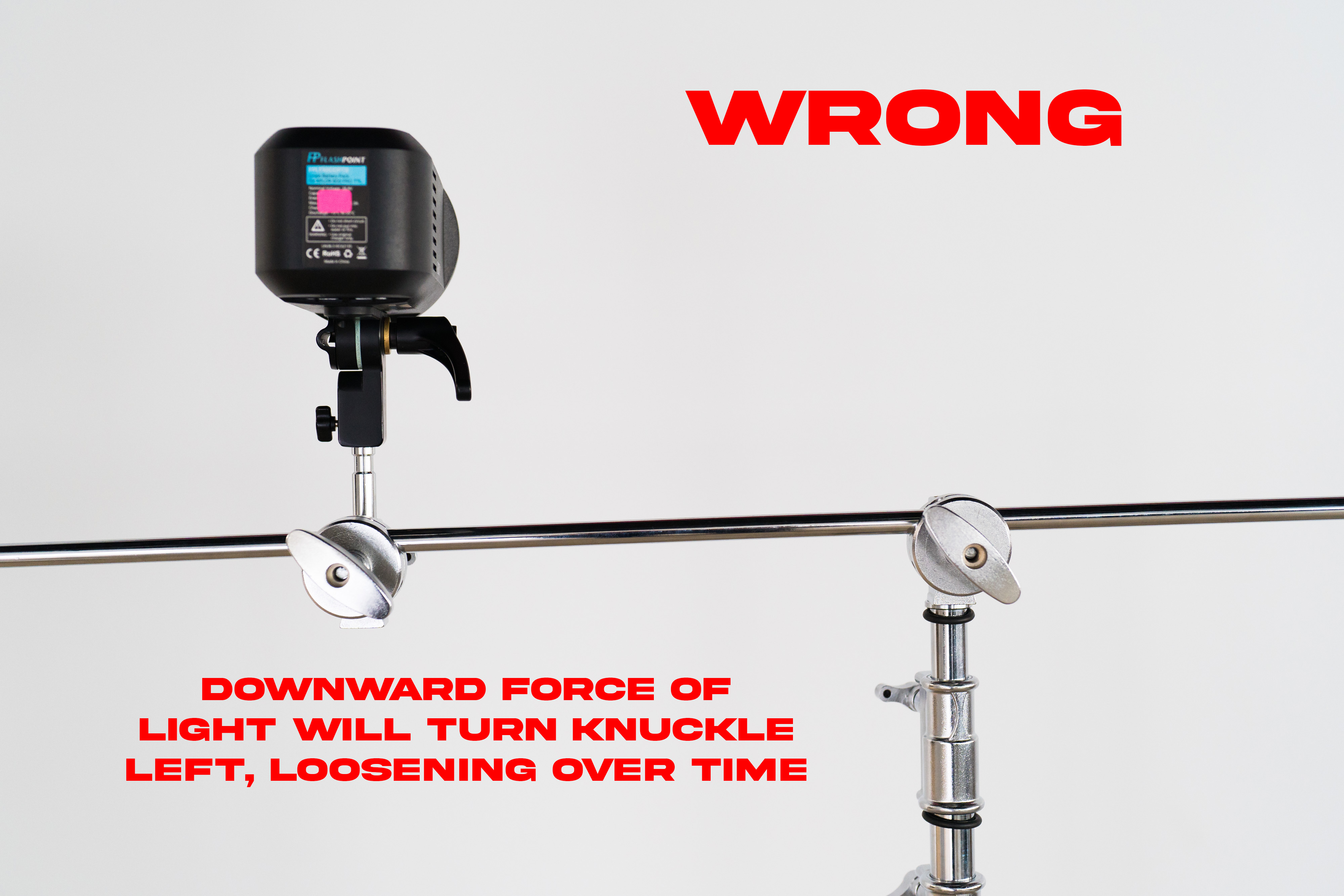
Article and Photos by Robert Hall

